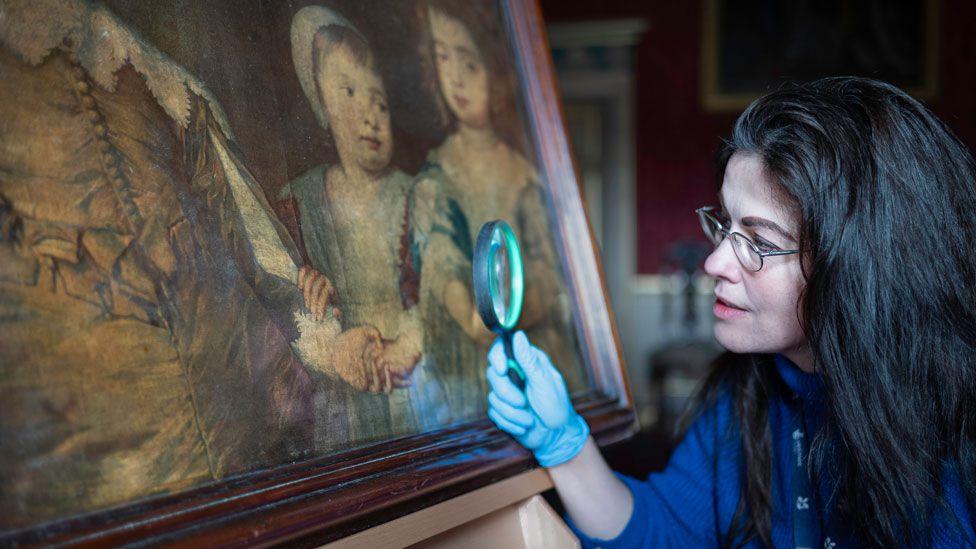The journey of a painting from Florence to Oxford
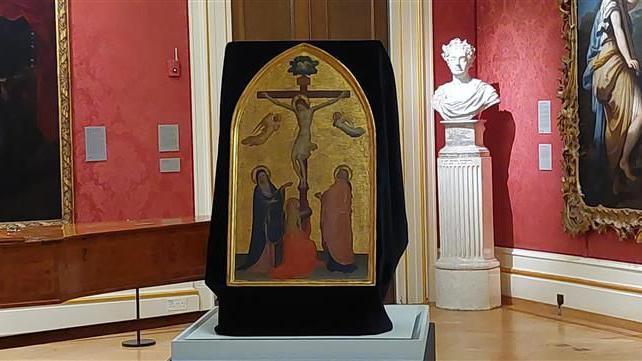
Ashmolean director Dr Xa Sturgis described the painting as "both very calm, but also very charged"
- Published
Museum staff have shared the history of a rare Italian renaissance painting they managed to save from being sold overseas.
The Ashmolean Museum in Oxford announced on Thursday that the 1420s crucifixion paining by Florentine artist Fra Angelico would now remain in the UK after it raised almost £4.5m.
Museum director Dr Xa Sturgis and Prof Jennifer Sliwka traced its origins from the Convent of San Marco to private English houses.
The Crucifixion is due to be displayed in the Early Italian gallery by the beginning of December.
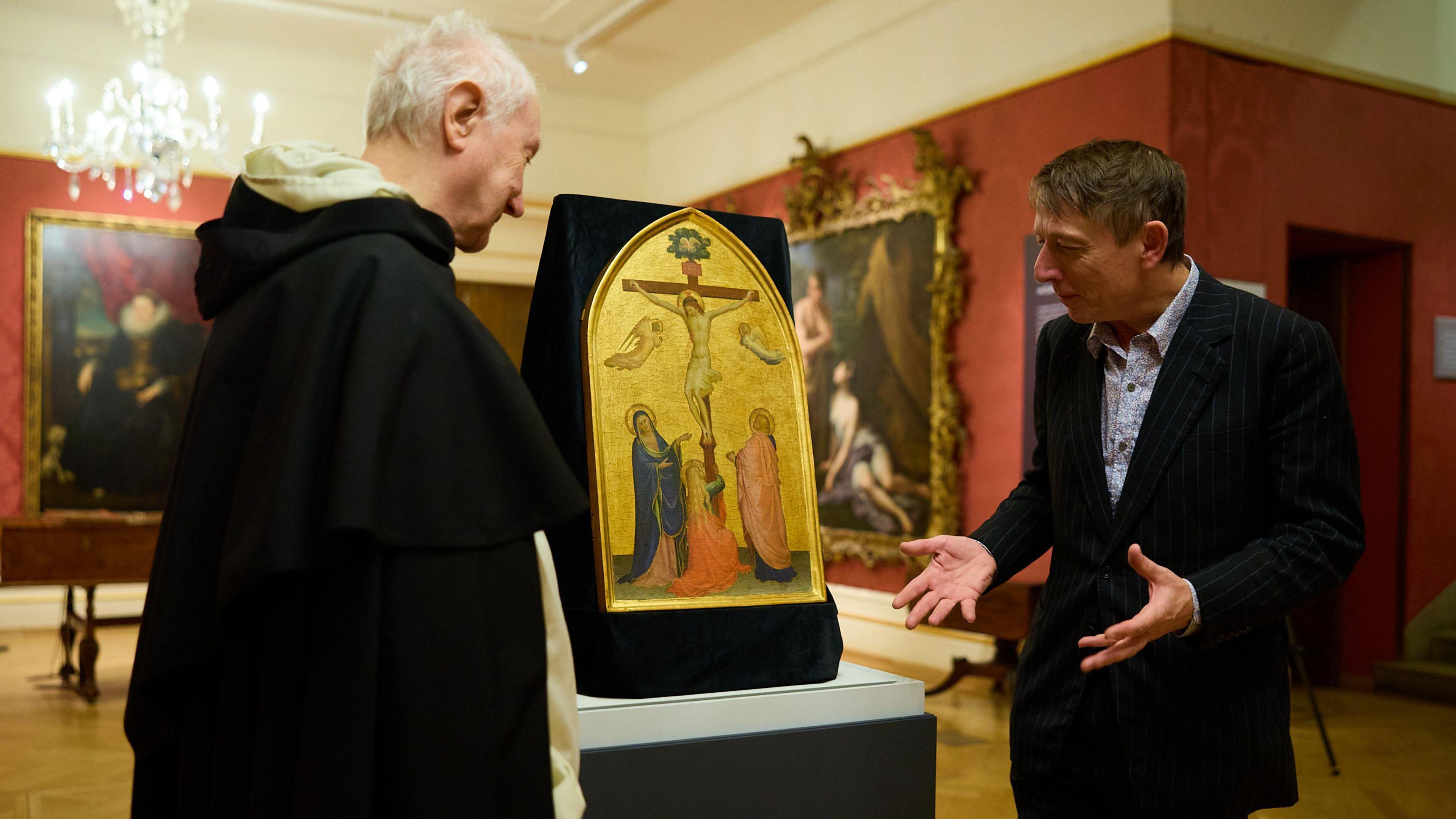
At the press conference announcing the purchase, which was also attended by Dominican Friar Timothy Radcliffe, OP, Dr Sturgis said that little was known about how the painting had made its way to the UK
The painting's full name is The Crucifixion with the Virgin, Saint John the Evangelist and the Magdalen.
It is one of the earliest in his large body of work that includes large-scale frescoes or monumental altarpieces
They were created for the church and the priory of the Convent of San Marco in Florence, where the artist, who was also a Dominican friar, lived.
Today the former convent houses the art museum of San Marco.
Most of Fra Angelico’s paintings remain in situ across his native city, its surroundings, and in the Vatican.
But the Ashmolean Museum said The Crucifixion was one of the few surviving small-scale works on panel by the artist.
Dr Sturgis said it had been in the UK for "probably about two hundred years" but little was known about how it had made its way here.
"We don't know exactly how it was bought, but it was bought by the Ashburtons, Lord Ashburton of the Baring family, and then it's passed through that family and different branches of it and stayed in that family pool until now," he said.
Prof Jennifer Sliwka, head of the Ashmolean's department of western art, added that Lord Spencer Compton, the 7th Marquess of Northampton, was among the family members who inherited it.
"And then it was offered for sale at Christie's Auction House," she said.
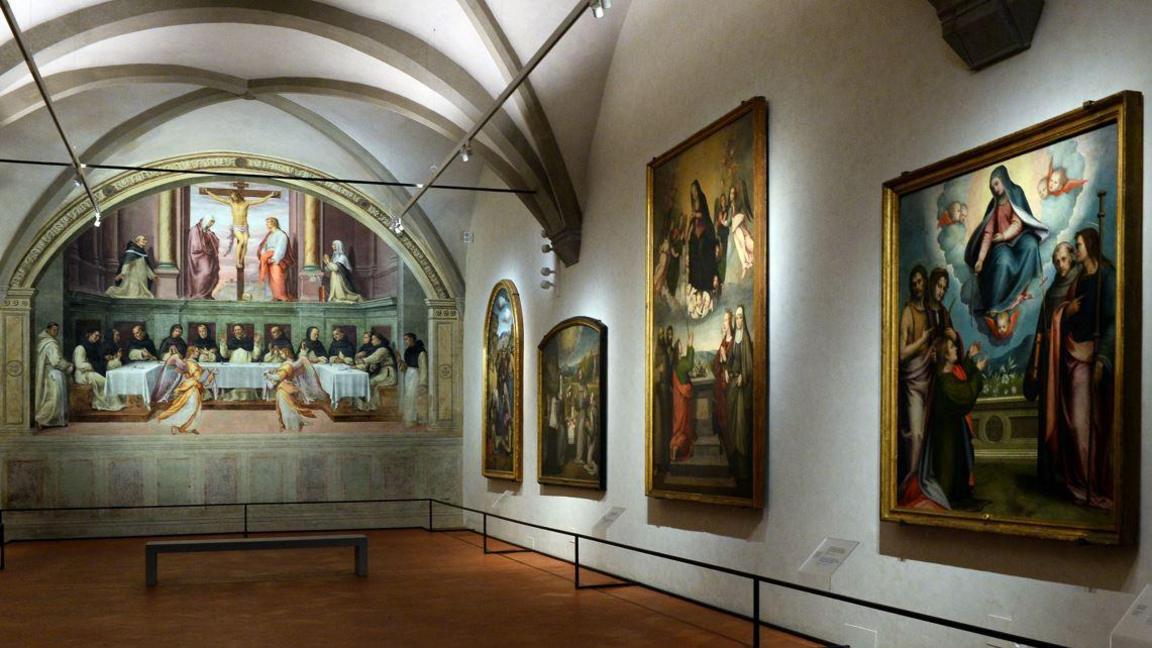
Fra Angelico was also a Dominican friar and resided in the San Marco convent, which today houses an art museum
She said that early Italian works had been cleared out from religious institutions due to suppression at the end of the 18th Century.
"A lot of these objects found their way into galleries and onto the art market," she said.
"So you see the kind of increase and desirability and collectability of these objects in the UK, especially."
Although the Medici were among San Marco's benefactors, Dr Sturgis said it was also unknown who the patron of The Crucifixion was.
"It's clearly a work for private devotion, so we can imagine an individual praying and meditating in front of this painting," he said.
"But it was almost certainly painted just as Fra Angelico entered the convent."
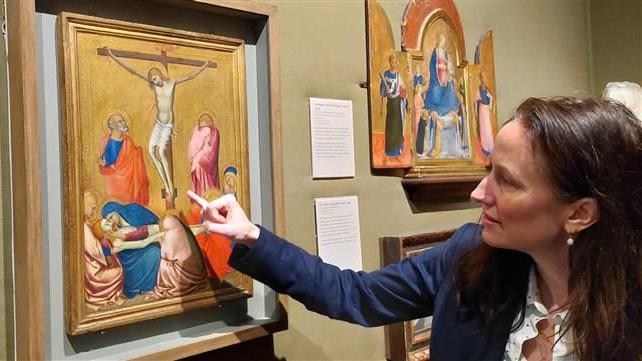
Prof Jennifer Sliwka said The Crucifixion would be "the showstopper" of its gallery
Prof Sliwka knew the painting was at risk of leaving the UK unless a domestic buyer was found.
A public institution could keep it if it matched the price it would be sold at within six months.
"I brought it immediately to the director and I said it needs to be here, I think this is an Ashmolean picture," she said.
"I had only arrived a few short months earlier, so it was a big statement to make."
Dr Sturgis said the process "was absolutely not a straightforward proposition".
"We weren't certain we would get there until about two weeks before the deadline.
"But urgency is quite a good way of encouraging people to come forward and support you."
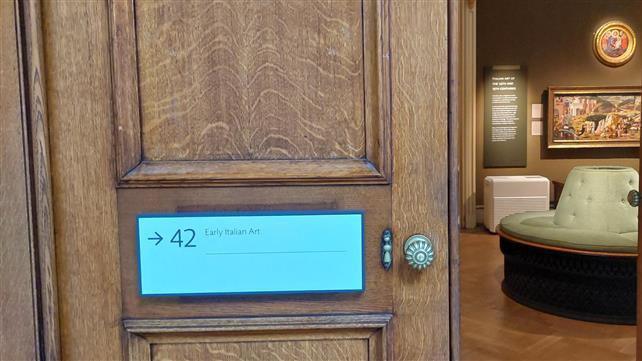
The Crucifixion will be on display in the Early Italian gallery by the beginning of December
The Ashmolean staff said they "can't wait" for the moment to display it for the local and international community to enjoy.
Dr Sturgis said that art historian Giorgio Vasari, external "famously wrote that Fra Angelico couldn't paint the crucifixion without tears streaming down his cheeks".
"He was very much concerned with the emotional response to a picture," he said.
"It is a very moving painting - it's both very calm, but also very charged."
He added that it was "certainly the earliest crucifixion by Fra Angelico that survives," capturing the beginning of the young artist's career.
His favourite detail is the figure of John The Evangelist.
"He turns his back to us... and you catch the side of his redden cheek as he looks up at the cross.
"It's a novel way of treating this figure and it shows Fra Angelico as a visual artist having new ideas about how to treat subjects that have obviously been painted many times."
Prof Sliwka said "the humanity of it" made it "compelling".
"It's a small picture, it's intimate picture, so you are compelled to move very closely towards it," she said.
"I think even in a large museum such as this, you have the opportunity to have that intimate one-to-one moment with this artwork."

The Ashmolean staff said they "can't wait" to display The Crucifixion for the local and international community
Prof Sliwka said The Crucifixion would be "the showstopper" of its gallery.
"It has a very beautiful context here because we have a very strong collection of gold ground works from the 14th and 15th Centuries."
It is also possible for the painting to return to Florence for a little while in September 2025.
The Ashmolean is considering the request for it to go on loan for the Fra Angelico exhibition until 25 January 2026.
Get in touch
Do you have a story BBC Oxfordshire should cover?
You can follow BBC Oxfordshire on Facebook, external, X (Twitter), external, or Instagram, external.
- Published7 November 2024
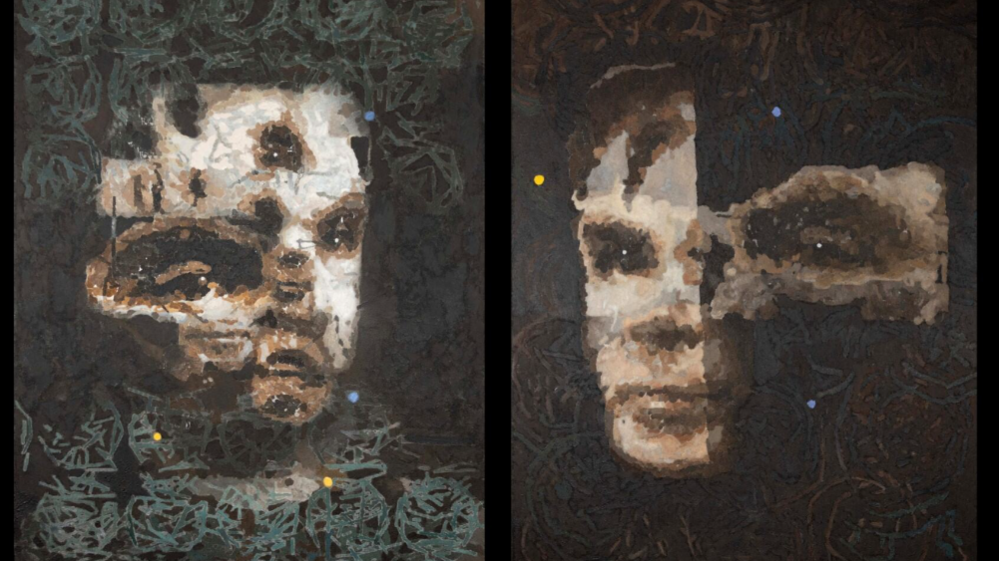
- Published14 September 2024
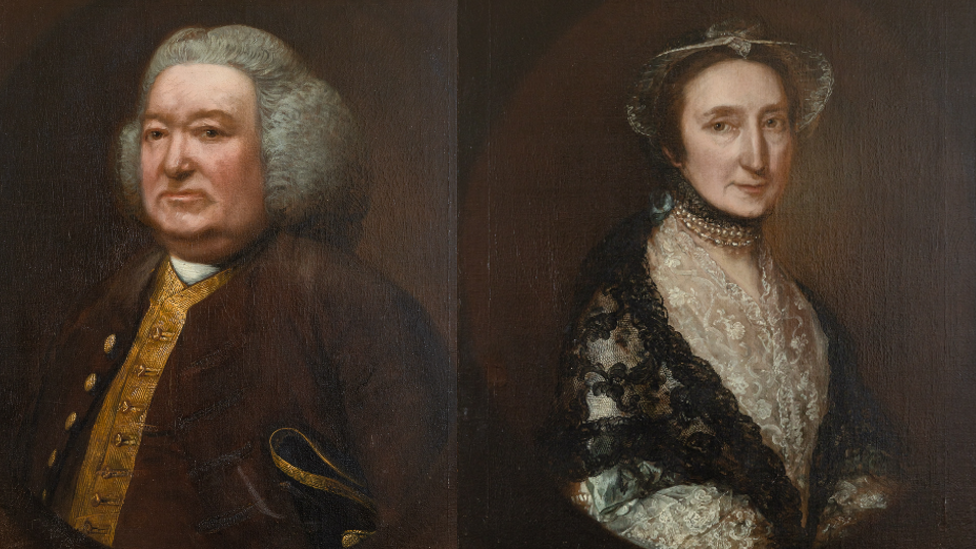
- Published4 October 2024
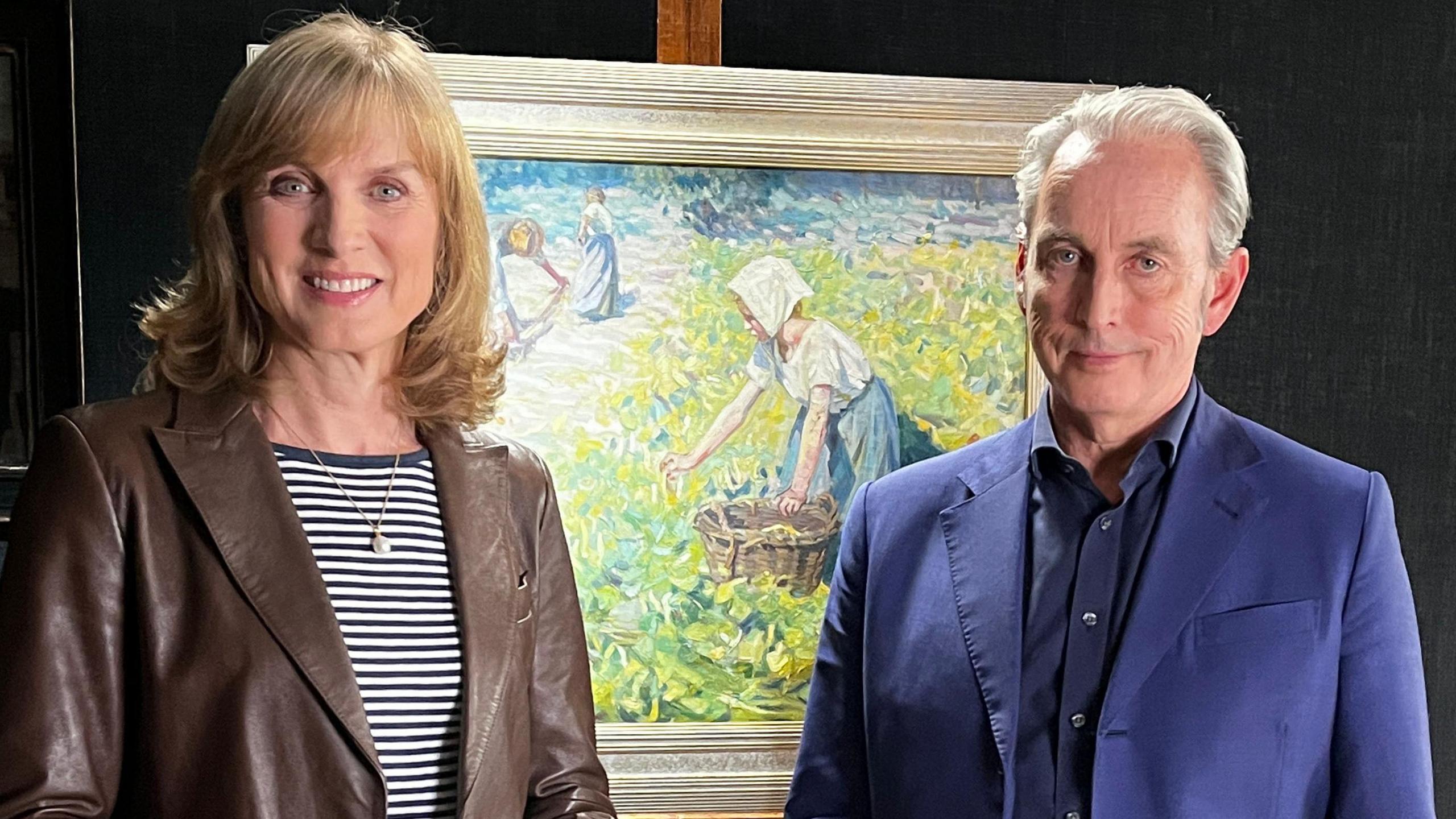
- Published7 May 2024
